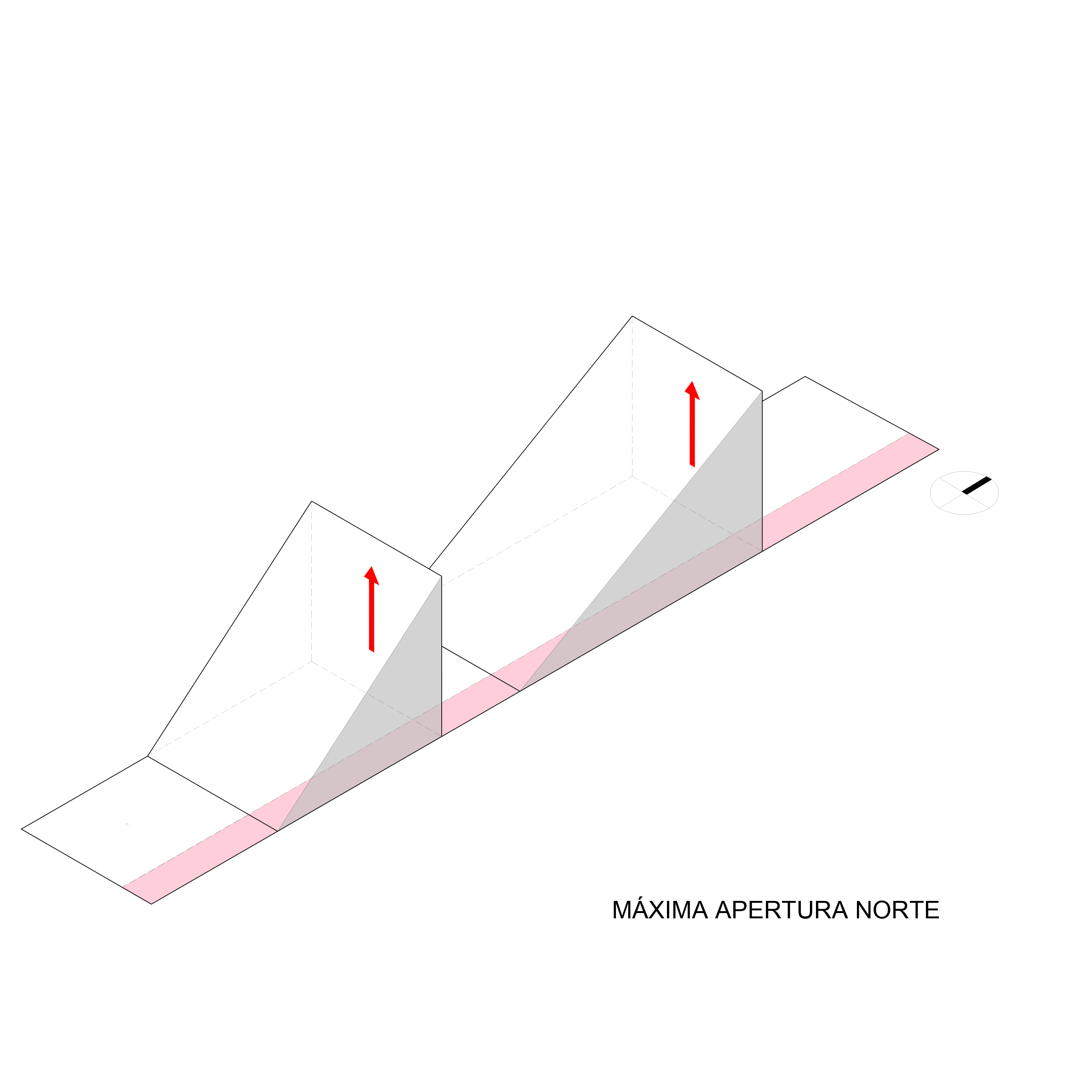MF工作室位于梅里达历史悠久的市中心以外的第一个低密度住宅区,它是在一块土地上设计的,这块土地上有一座建于1930年代的房子。通过这种新的用途,目的是恢复这个地区的可居住性,因为越来越多的人决定离开这个地区去城市的新开发地区。
Located in the first low-density residential neighborhood outside of Merida’s historical downtown area, MF Studios was designed on a section of a plot of land that had contained a house built in the 1930s. With this new use, the objective is to recover the habitability of an area from which more and more of the population decides to leave for newly developed areas in the city.
根据一对夫妇的要求,他们需要为艺术和缝纫提供工作空间,这实际上是不同的,但在某些方面有某种相似性。工作室被安排在一块尺寸有限的土地上(5.00 x 31.50米),与周围的住宅尺寸相比,它的正面狭窄,深度拉长。
Based on the requirements of a couple that needs spaces to work which are destined for art and sewing, which are in fact different, yet have a certain similarity in some aspects. The studios are arranged on a plot of land with limited dimensions (5.00 x 31.50m) in proportion to a narrow front and an elongated depth when compared to the surroundings that have residential dimensions.

原则。
– 充分利用自然光和风。
– 优化所有空间的使用。
– 将项目融入其建筑环境。
– 合理使用资金。
– 形式和空间主要与功能、背景和周围环境相关联并作出反应。
– 将可再生能源的使用和整合作为建筑外观的一部分。
Principles.
– To take full advantage of natural lighting and wind.
– To optimize the use of all the spaces.
– To integrate the project into its built environment.
– To rationalize the use of funds.
– Form and space correlate and respond primarily to the function, the context, and surroundings.
– Use and integration of renewable energies as part of the physical appearance of the building.
提议。工作空间和设施的线性组成,交替和排序,适应地块的狭窄和长度。
– 尽量减少一般的流通区域,将其与工作空间相结合。
– 共享设施和开放区域。
– 寻求与建筑环境特征的连续性,尊重具有高环境价值的 “传统 “街区的城市特征,这就是决定的原因。
保持街道与建筑之间的距离,与附近其他建筑的距离相同。
尊重附近建筑的高度限制。
保留有树木的区域,并将其与建筑结合起来。
Proposal. A linear composition of work spaces and facilities that are alternated and sequenced and adapt to the narrowness and length of the plot of land.
– To minimize general circulation areas, integrating them to the work spaces.
– To share facilities and open areas.
– To look for continuity with the characteristics of the built environment and respect the urban features of a “traditional” neighborhood that has a high environmental value, which is why it was decided:
To maintain the same distance that separates the street from the building as the rest of the buildings in the neighborhood do.
To respect the height limit of the buildings that are close by.
To preserve areas with trees and integrate them with the construction.
形式上的特点。
– 具有正交布局的大体量(工作空间)将其屋顶转化为锯齿状的倾斜板,以接受直接的太阳光和来自东北的凉风。
– 板块的倾斜角度与太阳的最佳角度和方向相对应,这是通过使用太阳能电池板产生能量的必要条件。
– 较小的紧凑体量(设施)与生动的颜色交织在一起,以显示功能和创造对比。
Formal Qualities.
– Bigger volumes (work spaces) with an orthogonal layout transform their rooftops into inclined slabs in the form of serrated teeth in order to receive direct sun light and the cool wind from the northeast.
– The angle to which the slabs are inclined corresponds to the optimal angle and orientation to the sun that is necessary to generate energy through the use of solar panels.
– Smaller compact volumes (facilities) intersect the composition with lively colors to indicate function and to create contrast.

– 线性和顺序的组织交替着开放和封闭的空间,以分享不同的使用空间,实现功能连接,并与植被结合,为室内提供空气和光线。
– 构图的形式轴线与主要的流通轴线相吻合,从入口处开始,到最后的开放空间,也就是休息的 “天井 “结束。
– 有自然采光的空间,使在那里进行的体力劳动更容易。
– 外墙的纹理和表面处理有助于创造一种自然的光泽,软化几何建筑形状,保护水平面的开口。
– Linear and sequential organization alternating open and closed spaces in order to share the different use of spaces, achieve functional connections and integrate areas with vegetation that offer air and light to the interiors.
– The formal axes of composition coincide with the main circulation axes starting at the entrance and ending with the last open space, which is the “patio” for rest.
– Spaces with natural lighting to make the manual labor that is to be done there, easier.
– Textures and finishes on the façade that propitiate the creation of a natural patina that softens the geometric architectural shapes, protecting the openings with horizontal planes.
Architects: Estudio Santa Rita
Area : 1238 ft²
Year : 2021
Photographs :Sergio Ríos
Manufacturers : Cemex, Grohe, Solarica, kimikolor
Lead Architect : Maricruz Alcalá López
Collaborators : Ana Laura Pérez, Victora Pedro Chan Solís, Gustavo Pech Collí
City : Merida
Country : Mexico

















